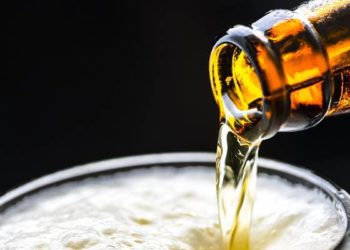Adolescent views on marijuana and alcohol associated with future DUI
1. Positive opinions, and a strong belief in one’s ability to resist marijuana in early adolescence, were associated with increased risk of driving under the influence (DUI) and riding with drunk drivers (RWDD) in later adolescence.
2. Over time, the role of adolescents’ peer groups became more influential in predicting their use of alcohol or marijuana.
Evidence Rating Level: 2 (Good)
Study Rundown: Alcohol and marijuana use among teens increases substantially up through 10th grade. During this time, adolescents begin driving, and are at risk for both DUI of alcohol and marijuana (AM) and RWDD. Factors influencing teen substance use, and their risk for DUI/RWDD have been thoroughly studied. This study is the first to examine risk factors for future DUI/RWDD among an even younger student population. Twelve-year-old California middle school students were asked their views on, and use of, marijuana and alcohol. These students were subsequently assessed 2 and 4 years later. Middle school students with more positive beliefs about marijuana, and a stronger ability to resist peer pressure to try the drug, had significantly higher risk of a DUI or RWDD later. Fourteen-year-olds who were using more alcohol, and were more exposed to peer and family AM use were at a higher risk for DUI/RWDD at 16. These results indicate a need for anticipatory guidance at a younger age than previously suspected. While this study has clear implications for counseling provided by medical providers, it is limited by potential bias in the selection of study participants.
Click to read the study published today in Pediatrics
Relevant Reading: Brief motivational interviewing for teens at risk of substance use consequences: a randomized pilot study in a primary care clinic
In-Depth [prospective cohort study]: This study recruited 1124 early-middle school students and 972 late-middle school students from 16 greater Los Angeles area middle schools participating in the substance use prevention program, CHOICE. Sixth and seventh graders completed surveys in 2009 (mean age 12.2 years, SD 0.7), and 2011 (mean age 14.3 years, SD 0.8). Participants were surveyed again at the age of 16, with a 60% follow-up rate. Among the early middle school students, there were 6 significant predictors of future DUI/RWDD by the age of 16 (p < 0.1). Some of these factors included: having positive beliefs about marijuana (OR = 1.80 95%CI 1.26-2.57), a stronger belief in one’s ability to resist marijuana use (OR = 1.59 95%CI 1.05-2.41), greater friend approval of alcohol use (OR = 1.52 95%CI 0.96-2.43), and being around peers who use (OR = 4.16 95%CI 1.18-14.68). Greater parental respect was a protective factor in this group (OR = 0.54 95%CI 0.31-0.94). Among late middle school students, there were 5 significant predictors of future DUI/RWDD, including adolescents used both alcohol and marijuana (OR = 2.94 95%CI 1.14-7.56), had positive beliefs about marijuana (OR = 2.03 95%CI 1.48-2.79), who spent more time around peers using marijuana (OR = 3.25 95%CI 1.41-7.51) and perceived greater marijuana use among family (OR = 1.92 95%CI 1.36-2.73).
Image: PD
©2015 2 Minute Medicine, Inc. All rights reserved. No works may be reproduced without expressed written consent from 2 Minute Medicine, Inc. Inquire about licensing here. No article should be construed as medical advice and is not intended as such by the authors or by 2 Minute Medicine, Inc.







